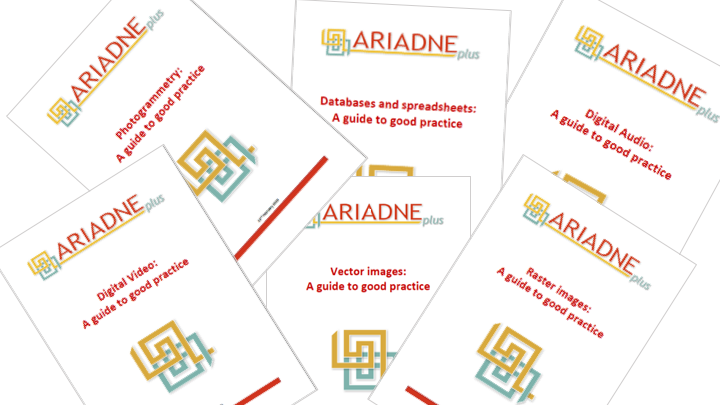Guides to Good Practice
The Archaeology Data Service at the University of York published a first set of Good Practice Guides several years ago to assist archaeologists with the issue of data preservation and archiving. As new technologies have been adopted with new data formats, the Guides were updated by the ARIADNE Project (2014-18) to reflect the increasing range of data outputs used by archaeologists. ARIADNEplus has now taken the Guides one step further so that they can be used by anyone who has to deal with the types of data covered as well some further updates to bring the Guides up to date. Each Good Practice Guide is available here as a PDF for downloading.
Documents and digital texts: A guide to good practice
This guide is intended to provide an overview of diverse types of binary and plain text files, the most commonly created file type in research projects.
Databases and spreadsheets: A guide to good practice
This guide aims to provide an overview of what to consider when preserving the most common features of databases and spreadsheets, highlighting the similarities and how they can be handled in a similar way, but also their differences and which additional elements, functions and processes need to be documented.
Digital Audio: A guide to good practice
This guide aims to provide guidance on what to consider when preserving the digital audio. It covers the most common file formats used for storing audio files and the formats that are suitable for archiving, as well as the archiving strategies that can be used to ensure that the quality of the audio files is maintained after preparation for archiving.
Digital Video: A guide to good practice
This guide aims to provide an overview of digital video files (i.e., video that exists as a digital file either on a recording device or on a computer) but does not cover either the digitisation of material or the transfer of material such as digital tapes or DVD-based video to desktop format.
Photogrammetry: A guide to good practice
This guide aims to provide guidance on what to consider both before and during the documentation and archiving of datasets produced using digital photogrammetry.
Raster images: A guide to good practice
This guide aims to provide guidance on what to consider when preserving raster images. It covers the most common file formats used for storing digital image files and which formats are suitable for archiving. It will also discuss the archival strategies that may be used to ensure that the quality of the image files is maintained.
Vector images: A guide to good practice
The guide covers the most common file formats used for storing vector images and which formats are suitable for archiving. It will also discuss the archival strategies that may be used to ensure that the quality of the files is maintained.
The Guides are also available in Swedish from the Swedish National Data Service here.

